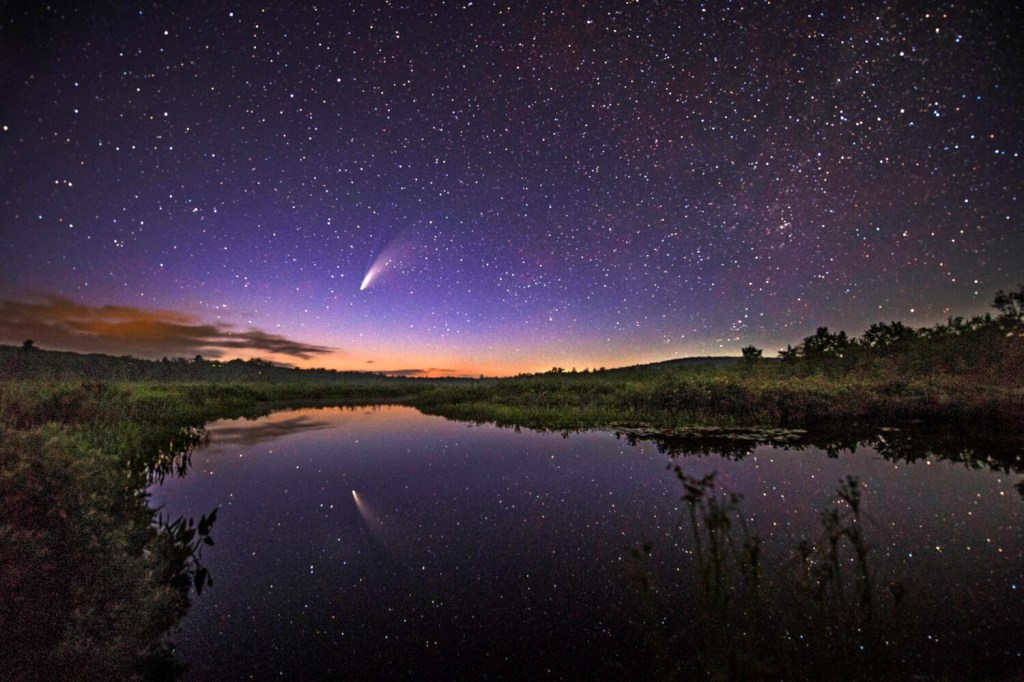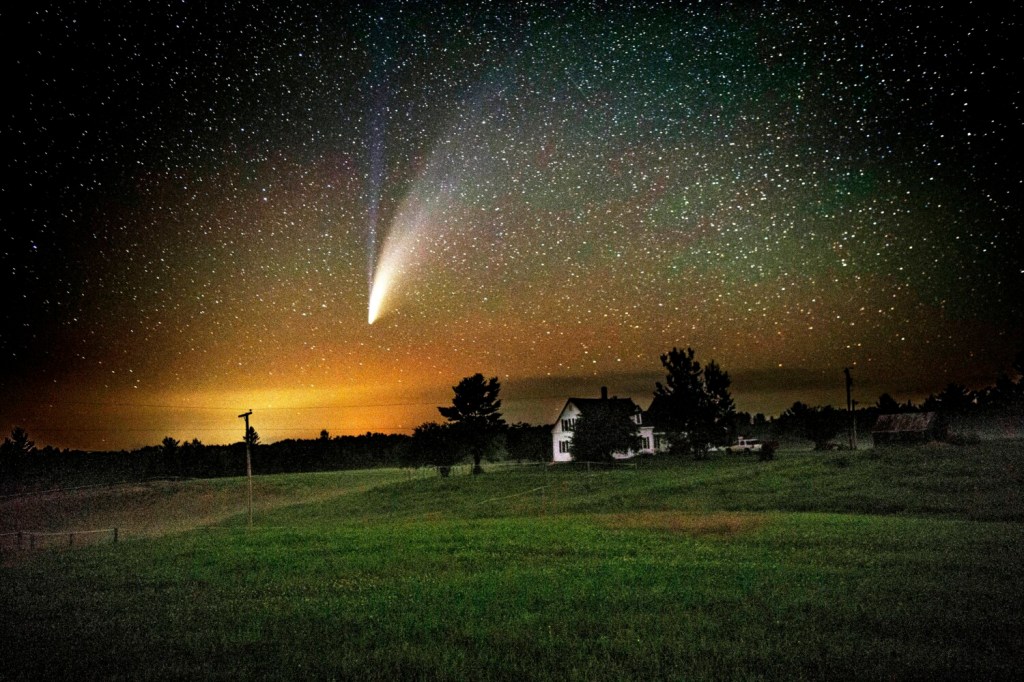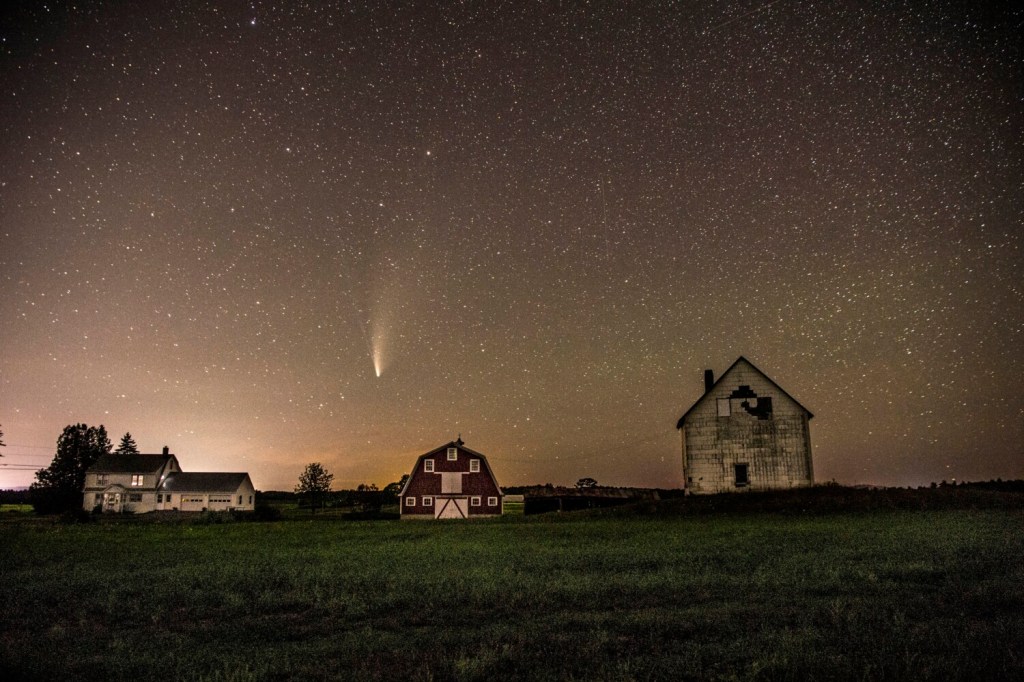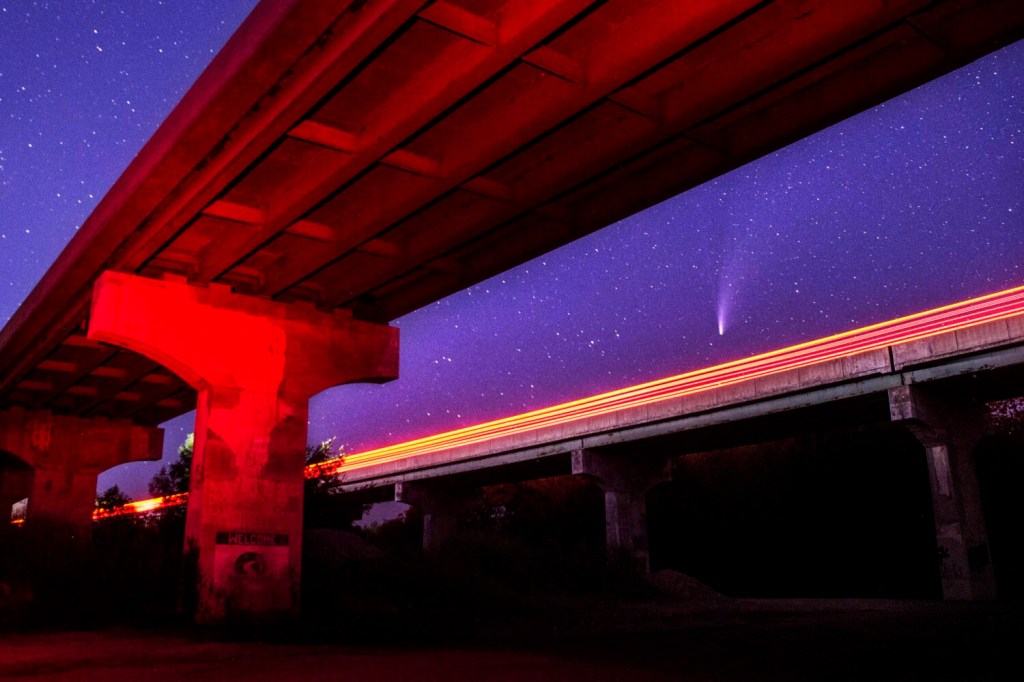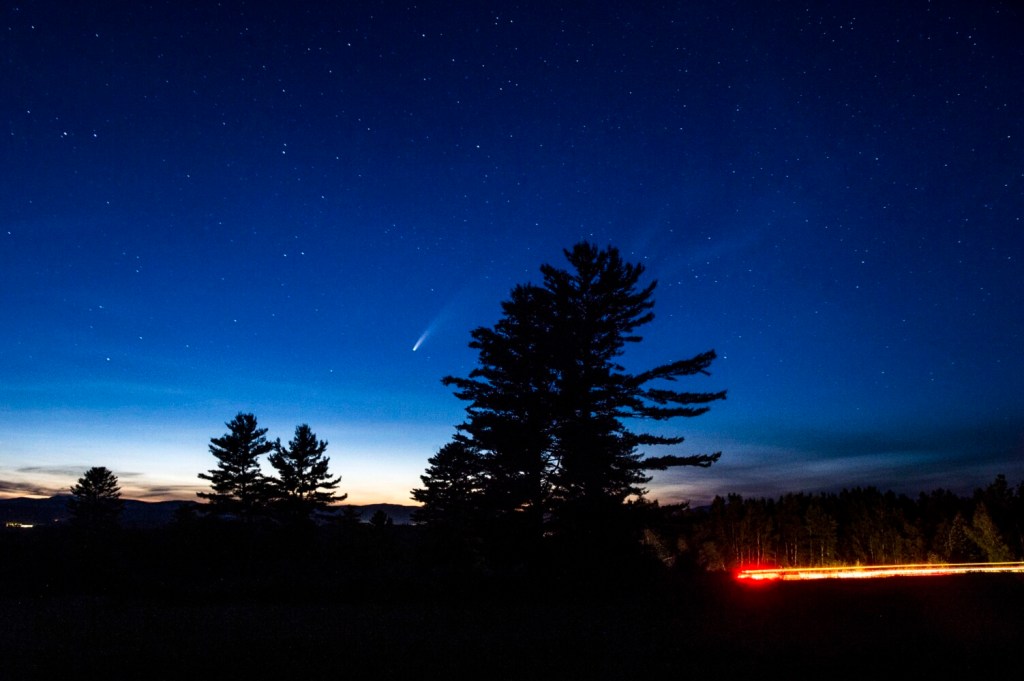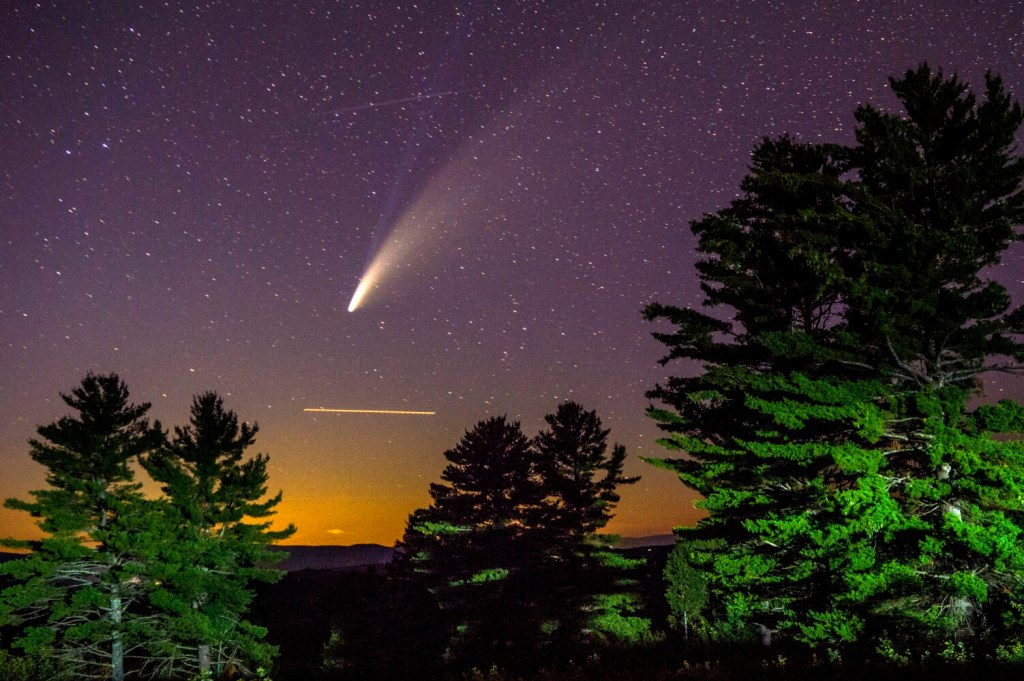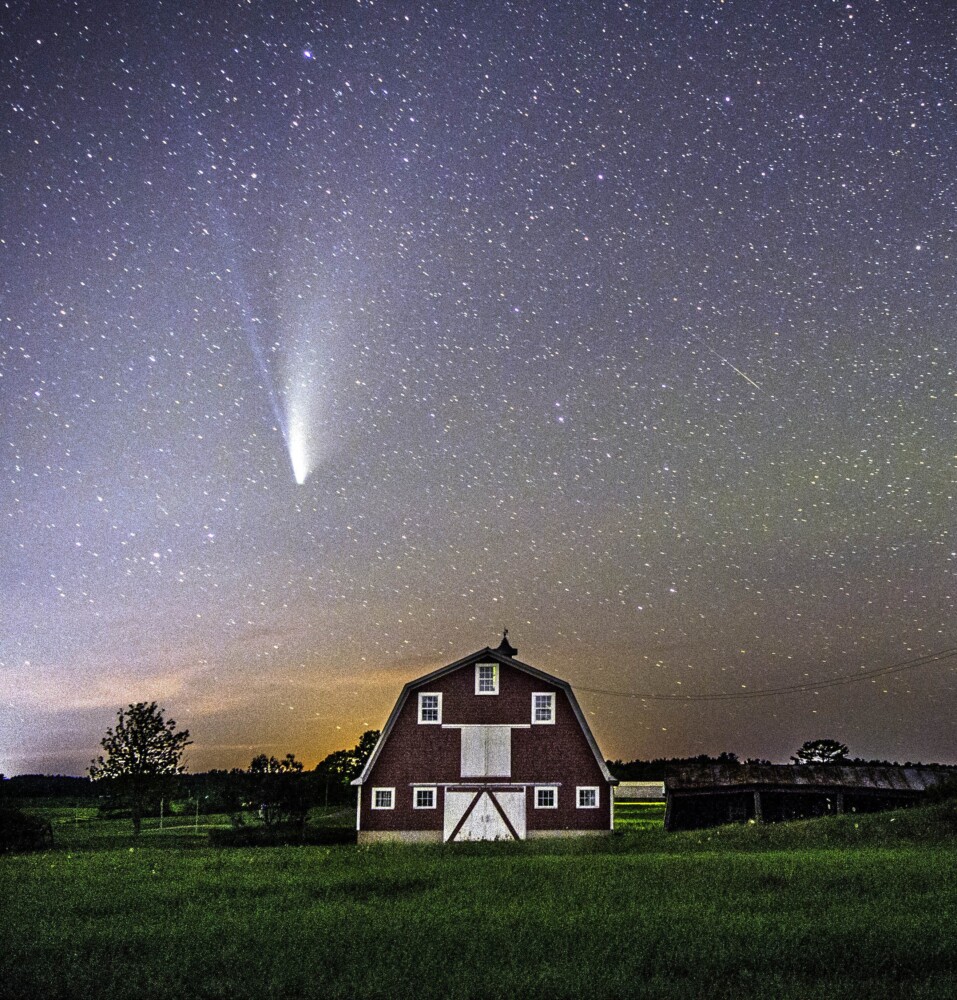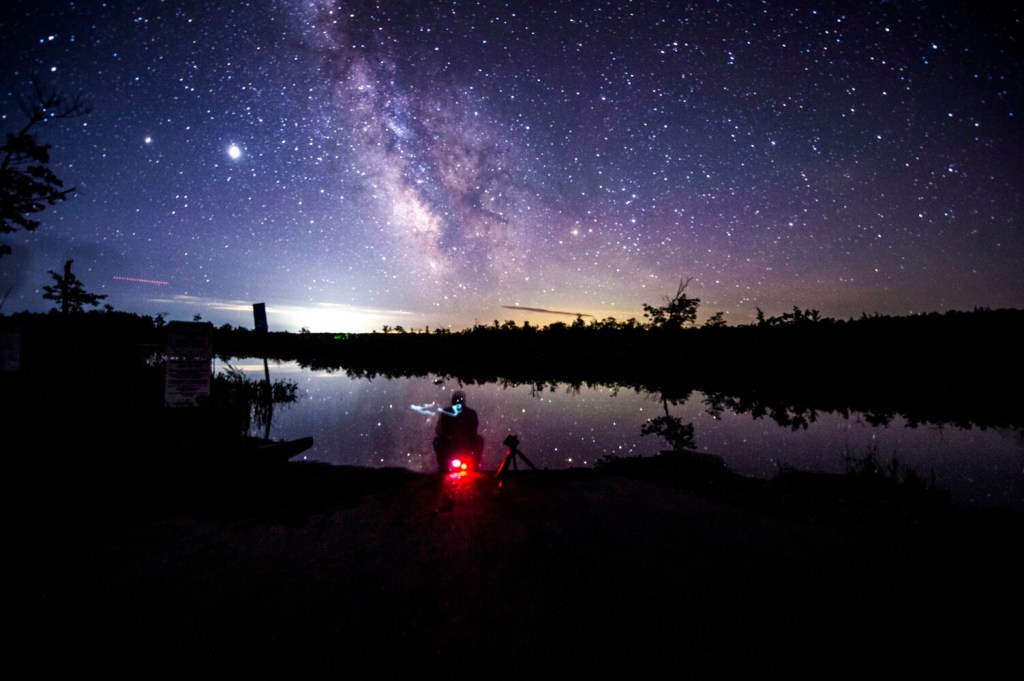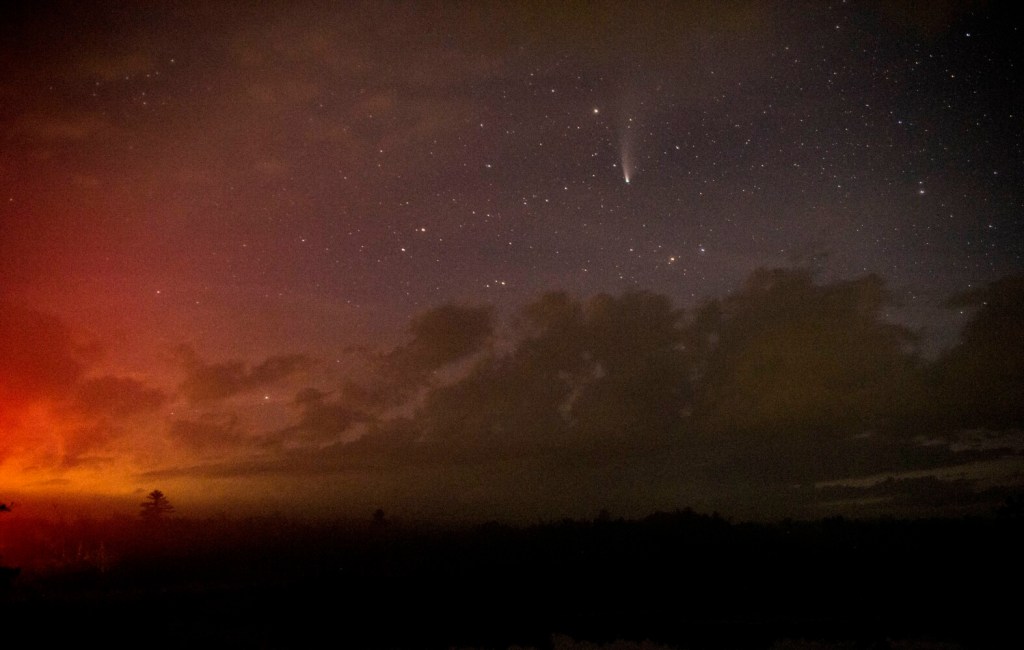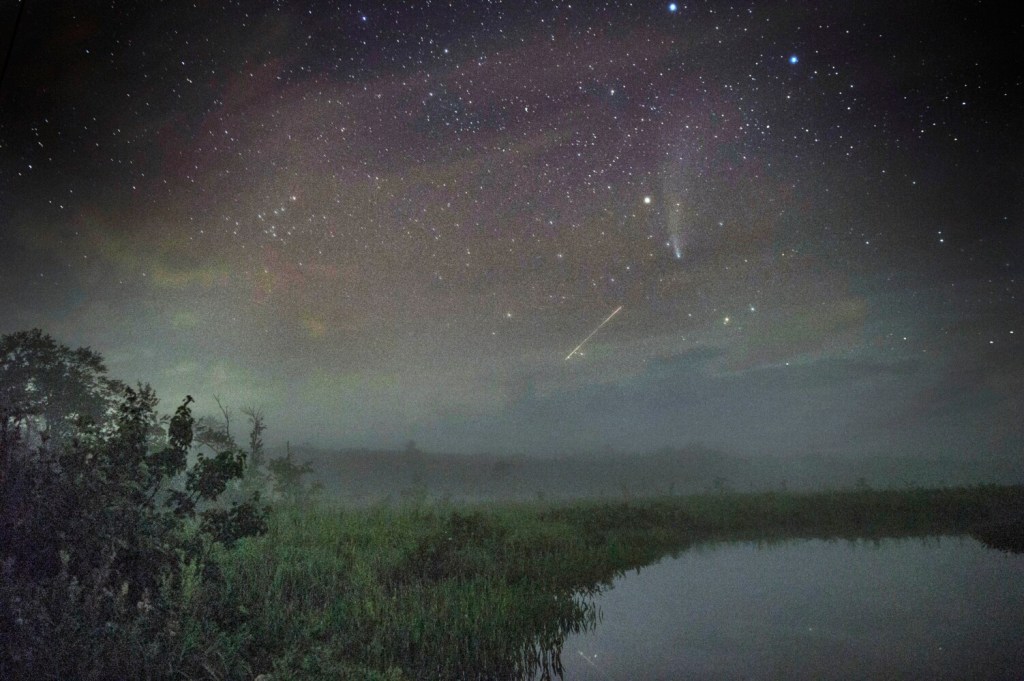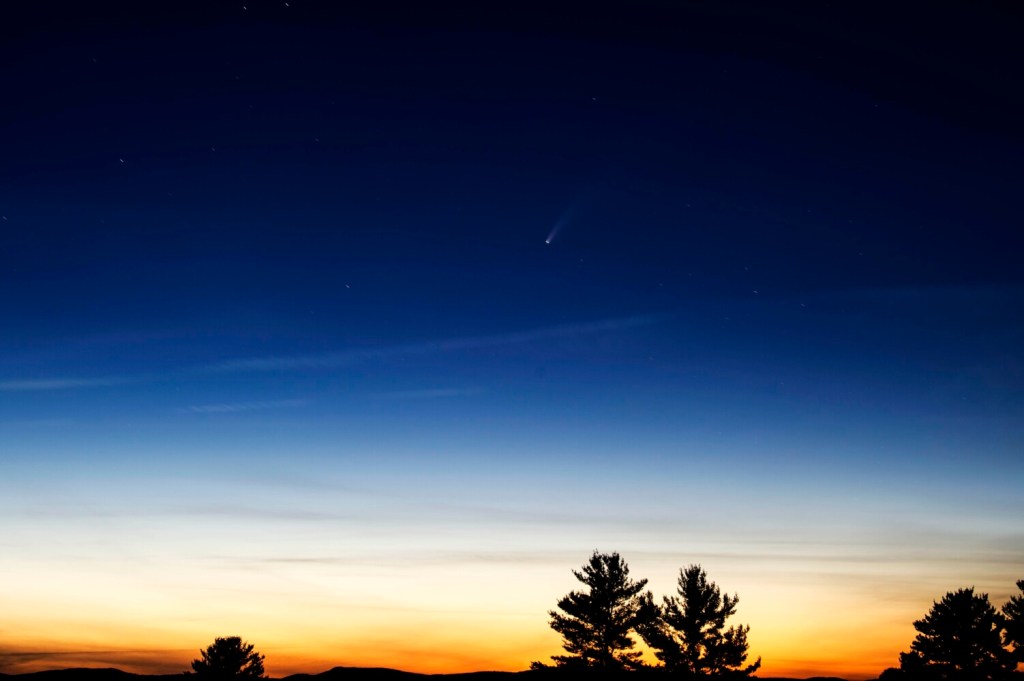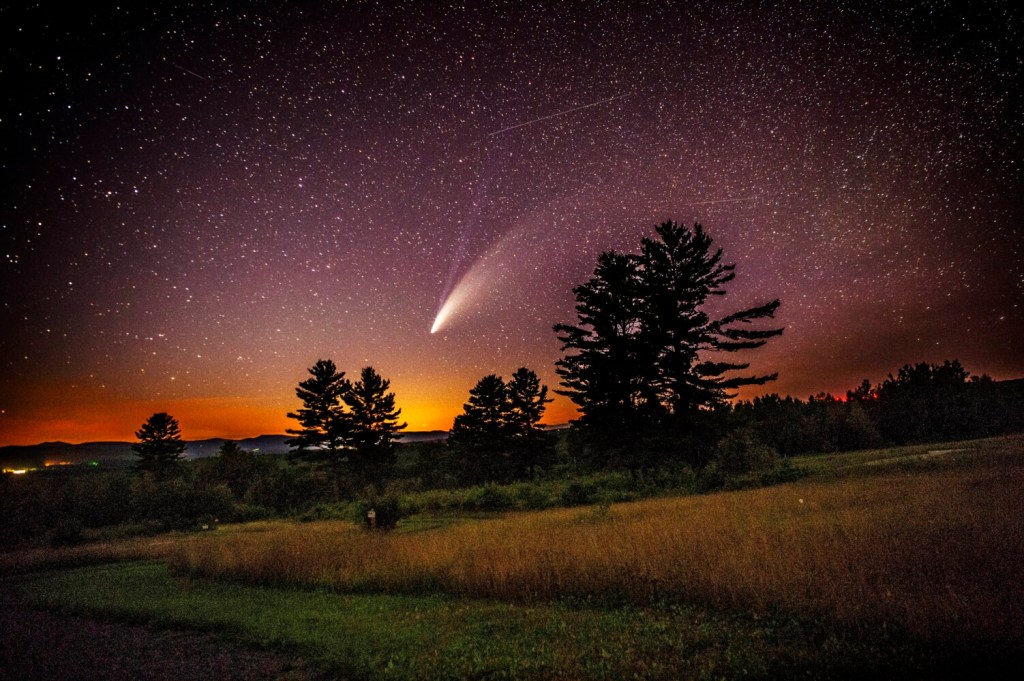The night sky is a comforting and humbling panorama that I search often. Dwarfed by the massive expanse of space, a person can put into perspective his own existence. A life may be nothing more than a blink of the eye in comparison to the expanse of time, but the idea that the comet I am seeing right now — the comet NEOWISE — might be viewed by people in another 6,800 years is exciting, exhilarating and motivating.
NEOWISE, a 3-mile in diameter nugget of ice and dust bound by the gravitational pull of the sun, is screaming through the inner solar system at the face melting speed of 40 miles per second (that’s 144,000 miles per hour) and yet it has been hanging above Earth like an ornament in the northwest sky. It will be leaving our view this weekend.
Discovered on March 27, the comet’s passage diminishes while humanity grapples with a global pandemic and civil unrest. Nevertheless, the comet has been a welcome distraction. Photographing an object moving at 144,000 mph while I stand on another object moving in another direction at 1,000 mph, using a tripod from the sitting position without my beer foaming up has been worth the effort.

Kyle Grantham, a professional photographer from Delaware, makes a picture of the Milky Way after making pictures Tuesday of his true objective, Comet NEOWISE, at the water’s edge of the Narrows on North Pond in Smithfield. The celestial event happens once every 6,800 years, making it a unique experience justifying the 1,200 mile round trip for only 4 hours of shooting. Michael G. Seamans/Morning Sentinel
My vision for this photo project was to offer a sense of time and place for the comet. When the comet passed 6,800 years ago, the planet was a different place 5,000 years into the Holocene Era, which began after the last ice age. Civilization had started to develop in the Fertile Crescent region of Mesopotamia, which is Iraq today. The chicken and horse were domesticated and the potter’s wheel was invented.
In our modern day we have cameras, automated vehicles, internet, people in space, a rover on Mars and satellites orbiting the planet, a far cry from getting chicken on demand and riding a horse that listens to you. What will the planet look like when NEOWISE passes again?
These ideas motivated me to capture the comet NEOWISE in the context of the farms, nature and structures that exist now and that will certainly be gone when it next passes by. I hope the pictures last long enough for people to compare what life looked like when NEOWISE passed over humans on planet Earth in 2020.
I’ve been working in central Maine for 10 years. I’ve had plenty of time traveling the state to create a catalog of spots to visit for a view of the night sky. The comet was not on my radar as the eclipse of a couple of years ago was. I planned for months to travel to Tennessee to view the totality. The comet required a different plan.
A photojournalist’s job is to give context to pictures. The comet is more than a comet. It’s a comet over Maine that required scouting areas in the daytime to find landmarks that said “Maine.” I wanted to show what the world looks like today in the hopes that 6,800 years from now, when the comet returns, my ancient digital pictures will show what the world looked liked when NEOWISE passed over in 2020.
The comet’s appearance has been timely. We are living in uncertain and stressful times. With no sports or live entertainment to occupy our minds, life is a bit simpler. The lack of air travel benefits photographing the night sky. It’s rare to have a clean canvas with no blinking lights and streaks from airplanes zig zagging through the star fields.

Traffic heads south on Interstate 95 as seen from Quarry Road in Waterville on Monday as Comet NEOWISE shines in the night sky. Michael G. Seamans/Morning Sentinel
The opportunity to view the comet has brought people outside into the dark stillness of the wilderness. Once again, Maine has been afforded a great opportunity to see an outer solar system resident make a fly-by. Clear nights, large rural expanses and wilderness void of artificial light all make for viewing and capturing in a photograph every little detail that lights up.
Comments are not available on this story.
Send questions/comments to the editors.

